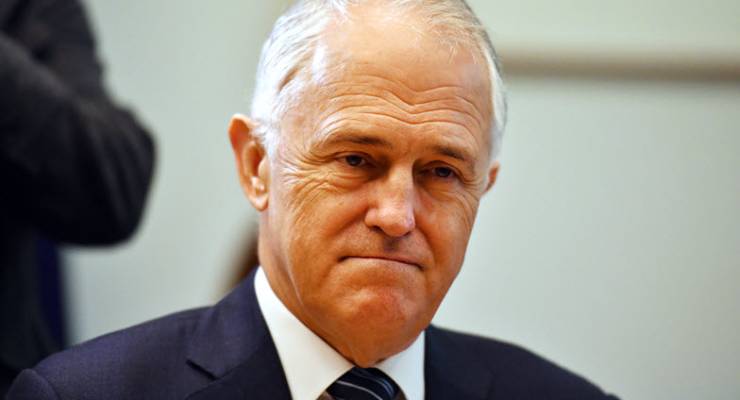
When Prime Minister Malcolm Turnbull goes to Washington this week to demonstrate his doe-eyed fascination with Donald Trump, we’ll doubtless hear a lot about those tax cuts that are being funnelled into share buybacks (if you listen to CEOs and analysts) or creating trillions in investment and jobs (if you believe the Financial Review). But there’s a major issue that needs to be at the top of Turnbull’s agenda, even if he won’t discuss it publicly.
Apart from Trump’s protectionist stupidity, which is risking a global trade war, one of the few clear policies of his chaotic administration is to cheapen the US dollar. And that is going to hurt the Australian economy, making the job of the Reserve Bank and Turnbull’s own government that much harder in the coming year. At the Davos circlejerk last week, US Treasury Secretary Steve Mnuchin touched off a currency firestorm when he said:
The dollar is one of the most liquid markets. Where it is in the short term is not a concern for us at all. A weaker dollar is good for us as it relates to trade and opportunities. Longer term, the strength of the dollar is a reflection of the strength of the US economy and that it is, and will continue to be, the primary reserve currency.
The effect was immediate: the dollar fell 1% to a new three year low against its six major currencies. So problematic was the idea of the US Treasury Secretary talking down the globe’s reserve currency that it even penetrated the orange thatch of Trump, forcing him to contradict Mnuchin and talk the dollar up. But that only temporarily buoyed the US dollar. The world knows that Trump is hellbent on ramping up protectionism for US industries — however clumsily — and the easiest way to do that is to trash your own currency.
[Trump finds a way to make protectionism even dumber, more damaging]
The Australian dollar has risen more than 11% against the greenback in the past 13 months, from around 72 cents in late December 2016 to around 81.1 US cents on Monday morning. The rise in the Aussie has come despite three rate rises by the US Federal Reserve last year while we had none, which should have weakened the comparative value of the Aussie currency.
That will translate into pain for Australian exporters to the US, who in 2017 saw their second straight year of US-dollar export value decline, according to US data. It also represents a de facto tightening of monetary policy and if it continues, will bear down on inflation and wage growth in coming months — which is not what the Reserve Bank and the federal government want to see. In fact, the weaker the greenback and the stronger the Aussie dollar, the greater the chance that any recovery in wage growth will be crunched, as the RBA minutes of its December board meeting said:
The Australian dollar had continued to fluctuate within its range of the preceding two and a half years. An appreciating exchange rate would be expected to result in a slower pick-up in domestic economic activity and inflation than currently forecast.
If Turnbull is in Washington to represent Australia’s interests, he should be making clear how unimpressed he is that the Australian economy — and his own election prospects — is mere collateral damage in Trump’s Make America Great Again silliness.









Sort of makes a mockery of the value of trade liberalisation and the TPPIPIIII (whatevs!) if the value we supposedly get out of the deals has all the substance of a ghost when the currency is talked down.
“orange thatch of Trump,” I have a feeling that during the American civil war the south, stripped of proper dye for uniforms, had to resort to a weird colour called butternut. Accordingly, I’ve imagined Donald Trump to be expressing-in a non verbal way- his support and affection for the deep south of that troubled era. “”I wish I was in Dixie, hooray.”” Or some such.
Re your leading comment – The dollar isn’t going anywhere good as long as we keep TOWING Trump’s line. – Should be ‘Toeing” as in ‘toe the line’:
“accept the authority, policies, or principles of a particular group, especially unwillingly.” Derived from athletes putting their toes on the line when lining up for a race.
Another tradition has it that the line “toed” was a deck plank – by (barefoot) ratings on 18C Royal Navy warships. The devil in term “between the devil and the deep blue sea”, refers to the difficulty in caulking (waterproofing) the edge plank of the deck of a wooden ship.
The US empire is declining and the China empire is expanding. All the rest is minor detail.
Turnbull is forever reminding us how terribly clever he is; if so, he tells a lot of lies, as he could not possibly believe what comes out of his mouth.